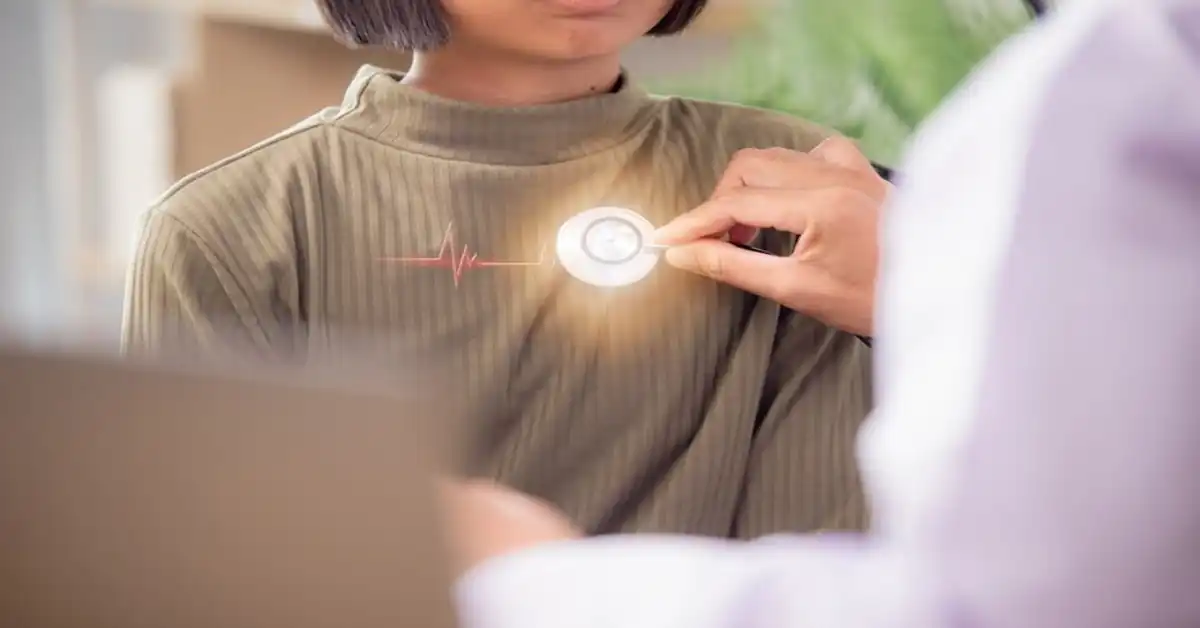In the ever-expanding realm of integrative health, technology continues to reshape the ways we understand the human body. From wearable fitness trackers to gene testing kits, modern wellness is moving far beyond the annual check-up. Yet among these innovations, one tool has quietly emerged with growing popularity in holistic clinics, naturopathic offices, and even elite wellness retreats: the Omega Scan.
Not to be confused with omega-3 tests or cardiac diagnostics, the Omega Scan offers something more elusive: a non-invasive, rapid, and data-rich look into the bioenergetic patterns of the body. It promises to detect nutritional deficiencies, stress responses, cellular imbalances, and even toxicity levels — often in under 15 minutes.
But what exactly is the Omega Scan? Is it science or pseudoscience? A breakthrough or a wellness fad? In this deep-dive article, we explore the technology, the controversy, and the future of a tool designed to measure the invisible.
What Is the Omega Scan?
At its core, the Omega Scan is a type of bioenergetic assessment tool, often categorized under bioresonance technology. Unlike traditional diagnostic tools that analyze blood, tissue, or DNA, the Omega Scan interprets the body’s subtle energy fields — specifically, the electromagnetic frequency signatures of cells, tissues, and organs.
The device works by sending electromagnetic signals through a handheld scanner or electrode pads, measuring the biofeedback response emitted by the body. This data is then translated via proprietary software into reports that claim to show:
- Vitamin and mineral deficiencies
- Hormonal imbalances
- Stress markers and adrenal load
- Immune system performance
- Organ health assessments
- Food sensitivities or intolerances
- Heavy metal toxicity
- Free radical levels
It is not a medical diagnostic tool per se, but rather a wellness assessment — used to identify trends, imbalances, and areas for potential improvement in overall health.
READ MORE: Tex9.net Green IT: Reimagining Technology for a Sustainable Future
The Technology Behind It: How Does the Omega Scan Work?
While it may sound futuristic — or even vaguely magical — the concept is rooted in decades-old research in quantum physics and bioelectromagnetics.
1. Bioresonance Principles
The human body emits low-level electromagnetic signals. These signals vary depending on the health, hydration, and stress level of each cell or organ system. The Omega Scan claims to detect anomalies in these frequencies and match them against a database of healthy frequency signatures.
The system is designed to measure resonance or dissonance with specific markers:
- If the signal resonates, the system considers the body “in balance.”
- If dissonance is detected, it suggests potential stress or deficiency.
2. Quantum Electrodynamic Interpretation
Some models of the Omega Scan reference quantum electrodynamic fields — the idea that cellular processes are governed by quantum communication beyond just chemical reactions. While still controversial in mainstream medicine, this theory underpins several emerging wellness technologies.
What Happens During an Omega Scan Session?
A typical Omega Scan appointment takes 20–40 minutes and feels more like a wellness consultation than a clinical procedure.
Step-by-Step Experience:
- Initial Intake:
You’re seated and asked a few general health questions. - Device Connection:
The practitioner places handheld electrodes in your palm or attaches small sensor pads to the skin. You may also place your feet on conductive plates. - Scanning Process:
The device emits low-frequency electromagnetic waves and reads the body’s response. There is no sensation — no pain, pressure, or heat. - Data Analysis:
Within minutes, the software generates charts and graphs that reflect organ health, stress levels, nutritional markers, and more. - Review and Recommendations:
The practitioner interprets the data and may suggest lifestyle changes, supplements, detox plans, or further medical evaluation.
It’s important to note: the Omega Scan does not provide medical diagnoses. Its value lies in suggesting patterns and prompting preventive conversations.
The Claims vs. The Criticisms
As with many alternative health tools, the Omega Scan sits at the intersection of innovation and skepticism.
Supporters Say:
- It’s a non-invasive early warning system.
- Results often correlate with symptoms patients report but can’t validate through conventional means.
- It helps people take proactive control of their wellness.
- There are no side effects or risks.
Critics Say:
- The science lacks peer-reviewed validation.
- The data may reflect generalized algorithms rather than individual diagnostics.
- Results can vary between sessions, raising reliability concerns.
- Some practitioners oversell the technology to vulnerable clients.
The truth, as usual, is more nuanced. While the Omega Scan isn’t a substitute for lab work or medical imaging, it may offer valuable complementary insight, particularly in functional or preventative care settings.
Who Uses the Omega Scan — and Why?
Originally developed in the early 2000s and adopted by European integrative clinics, the Omega Scan has now found global traction.
1. Naturopaths and Holistic Doctors
These practitioners value the tool’s ability to highlight subclinical imbalances before symptoms manifest fully.
2. Nutritionists and Wellness Coaches
They use Omega Scan to tailor personalized supplement protocols or dietary adjustments.
3. Athletes and Biohackers
High-performance individuals rely on it to monitor oxidative stress, hormonal cycles, and cellular recovery.
4. Corporate Wellness Programs
Some progressive companies offer Omega Scans as part of their employee wellness packages, focusing on stress resilience and immune health.
Applications in Modern Wellness
As more consumers seek holistic, individualized care, the Omega Scan aligns with several health trends:
Personalized Wellness
Unlike one-size-fits-all health advice, Omega Scan results generate individual health maps, guiding tailored interventions.
Preventive Healthcare
Rather than waiting for illness, the scan empowers users to adjust nutrition, sleep, and activity levels before reaching a crisis point.
Integrative Medicine
Many MDs now work alongside holistic therapists who use Omega Scans to cross-reference lab findings, offering a layered perspective.
Limitations and Ethical Considerations
No technology is without its pitfalls — especially one operating outside traditional frameworks.
Reliability and Reproducibility
Different practitioners may interpret the data differently. There are no standardized guidelines, and results can shift based on factors like hydration or emotional state.
Overinterpretation
Some practitioners may overstate the capabilities of the scan. This could lead clients to neglect needed medical tests or pursue unnecessary treatments.
Cost and Accessibility
While scans are generally affordable ($50–$200), they are not covered by insurance and may not be accessible to all.
The Future of Omega Scan: What’s Next?
Omega Scan technology is evolving, integrating with AI-based analysis and cloud-stored health data for longitudinal tracking. Some upcoming developments include:
Mobile Integration
Future versions may sync with smartphones, allowing ongoing scans and updates from home.
Telehealth Compatibility
Practitioners may soon be able to remotely scan patients using wearable versions of the technology.
Cross-Platform Health Metrics
Merging Omega Scan data with heart rate monitors, sleep trackers, and diet logs could offer holistic health dashboards.
A Word of Caution
As with any wellness technology, the Omega Scan should be seen as informational, not diagnostic. While many users report life-changing insights, the tool works best when used in conjunction with traditional medical care.
Consumers should:
- Ask for credentials of the practitioner.
- Treat results as conversation starters, not clinical conclusions.
- Use results to explore further testing, not replace it.
Final Thoughts
In a world saturated with data but starved for context, the Omega Scan represents a unique middle ground. It doesn’t claim to cure. It doesn’t pierce the skin. It doesn’t shout. It listens — quietly, energetically — to the signals your body might already be sending.
It is not the future of medicine, but perhaps, a companion to it — a mirror held up not just to our health, but to our desire to understand it in ways both ancient and new.
FAQs About Omega Scan
1. Is the Omega Scan FDA-approved?
No, it is not FDA-approved for diagnostic use. It is categorized as a wellness assessment tool and should not replace medical diagnostics.
2. How accurate is the Omega Scan?
While many users report that results align with symptoms, accuracy can vary. It’s best used alongside conventional lab tests.
3. Does the Omega Scan hurt or involve radiation?
No, it is completely non-invasive and uses low-level electromagnetic frequencies — not radiation.
4. Can children or pregnant women use it?
In general, yes — it’s considered safe. However, always consult a healthcare provider before use during pregnancy.
5. How often should I get an Omega Scan?
Most wellness practitioners recommend scanning every 3–6 months or whenever you feel a significant change in health.









